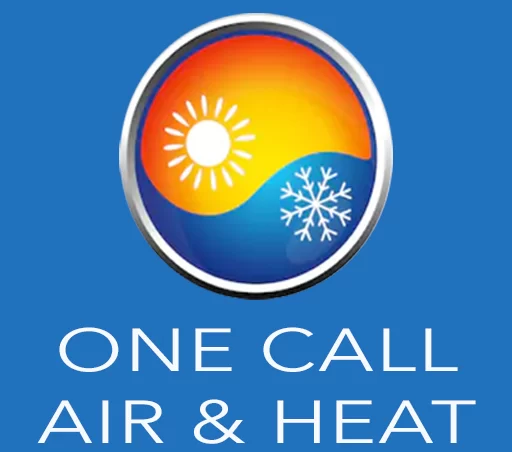Seasonal HVAC Maintenance Tips: A Comprehensive Guide
Maintaining your HVAC (Heating, Ventilation, and Air Conditioning) system is crucial for keeping it running smoothly, extending its life, and making sure your home stays comfortable throughout the year. As the seasons change, so do the demands on your HVAC system. To help you manage seasonal HVAC maintenance, we’ve put together an easy-to-follow guide with essential tips and strategies. This guide will cover everything you need to know, from getting your system ready for summer and winter to dealing with common problems and doing regular checks.
Spring Maintenance: Preparing for the Cooling Season
As the weather warms up, get your air conditioner ready for summer by first inspecting the outside unit for debris and blockages, such as leaves and dirt, which can obstruct airflow and reduce efficiency. Cleaning the condenser coils is also crucial since accumulated dirt can make your system work harder to cool your home; use a soft brush or vacuum to remove loose debris and apply a coil cleaner if needed. Next, check and replace or clean the air filters every 1-3 months to ensure proper airflow and good air quality. Ensure your thermostat is set correctly, and consider upgrading to a smart thermostat for better energy savings. Inspect your ductwork for visible damage or leaks, sealing any gaps with duct tape or mastic sealant, and consider having a professional address any issues. Finally, schedule a professional tune-up to get a thorough inspection and ensure your system is running efficiently and effectively.
Summer Maintenance: Keeping Cool and Efficient
During the hot summer months, your air conditioner works hard, so it’s important to check and replace the air filters every 1-2 months to keep the system running efficiently. Keep the condenser unit clean by ensuring there are no debris or blockages obstructing airflow; if the unit struggles or makes unusual noises, it may need professional attention. Monitor your system’s performance and address any issues like inadequate cooling or temperature fluctuations promptly to prevent larger problems. Also, check refrigerant levels, as low levels can impair cooling and potentially damage the system; contact a professional to refill if needed. Lastly, ensure proper insulation around ducts and windows to prevent cool air from escaping and consider upgrading insulation to enhance your home’s energy efficiency.
Fall Maintenance: Preparing for the Heating Season
Before the cold weather arrives, inspect and clean your furnace to ensure it’s ready for use by removing any dust or debris that might have accumulated, which helps prevent problems and keeps it running efficiently. Just as in the spring, check and replace or clean the air filters to avoid reduced efficiency and poor air quality caused by clogged filters during the heating season. Make sure your thermostat is functioning properly and set to the right temperature, adjusting settings on a programmable thermostat to match your new schedule. Fall is also a good time to inspect your ductwork for any leaks or damage, which can cause heat loss and higher energy bills; seal any leaks and consider having a professional conduct a thorough inspection. Finally, schedule a professional inspection to ensure your furnace or heat pump is in good condition and ready to keep you warm throughout the winter.
Winter Maintenance: Keeping Warm and Efficient
During winter, monitor your heating system’s performance closely; unusual noises or decreased efficiency could signal a problem that needs prompt attention to prevent further issues. Ensure proper ventilation by checking that vents are not blocked by furniture or other items, and confirm that your ventilation system is working well to keep the air fresh and free of pollutants. For safety, check your carbon monoxide detectors by replacing the batteries and making sure they are functioning correctly, especially if you use a fuel-burning heating system. Keep your vents and registers clear of obstructions like furniture or curtains to maintain good airflow and system efficiency. If you use a fireplace or wood stove, have your chimney inspected and cleaned by a professional to remove soot and creosote buildup, reducing the risk of chimney fires and ensuring safe, efficient operation.
Year-Round Tips for Optimal HVAC Performance
Keep the area around your HVAC unit clean by regularly removing debris, leaves, or snow to prevent blockages and potential damage, whether it’s an air conditioner, furnace, or heat pump. Consider upgrading to newer, energy-efficient HVAC systems if your current one is outdated, as modern systems can lower energy bills and boost performance. Ensure proper insulation and seal gaps around doors and windows to enhance your home’s energy efficiency, reducing the strain on your HVAC system and maintaining a consistent indoor temperature. Use ceiling fans wisely by setting them to rotate counterclockwise in the summer to create a cooling breeze and clockwise in the winter to help circulate warm air. Additionally, monitor and adjust indoor humidity levels with a humidifier or dehumidifier to improve comfort and HVAC efficiency.
Conclusion
Seasonal HVAC maintenance is essential for making sure your system runs efficiently and reliably all year long. By following these tips for each season, you can help extend the life of your HVAC system, improve indoor air quality, and keep your home comfortable. Regular inspections, cleaning, and professional check-ups will help keep your system in top shape and prevent costly repairs.
Remember, while you can handle many of these tasks yourself, some might need professional help. Don’t hesitate to contact a qualified HVAC technician if you have any issues or are unsure about performing maintenance tasks. With the right care, your HVAC system will continue to provide comfort for years to come.
